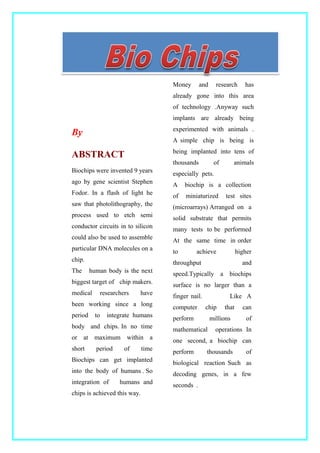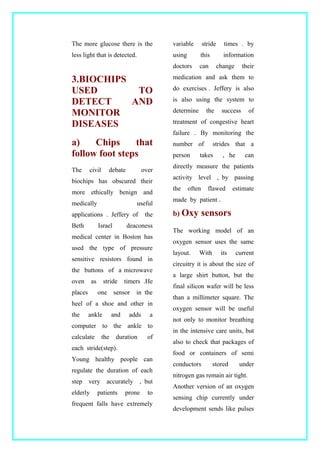Biochips were invented 9 years ago and can be used to assemble DNA molecules on a chip or perform thousands of biological reactions in seconds. Researchers are working to integrate biochips with the human body by implanting them under the skin to monitor health metrics like blood glucose or oxygen levels. However, implantable biochips raise significant privacy and ethical concerns if they are used to track or control individuals without their consent.











